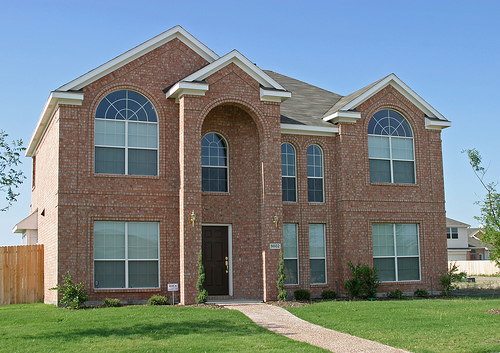 Old folks’ home?Photo: Dean Terry
Old folks’ home?Photo: Dean Terry
So some real estate types got together in Florida this week and tried to figure out what the heck kind of housing they might be able to market to the members of Gen Y, or the Millennials — those Americans born roughly between 1980 and the early 2000s.
The folks leading panels on Gen Y at the National Association of Home Builders conference (which is probably hasn’t been a super upbeat event for the last couple-three years) are predicting that the kids are going to opt out of the cookie-cutter McMansions their parents loved so much (at least until they ended up underwater) and opt into smaller spaces in more walkable neighborhoods. From The Wall Street Journal‘s Developments blog:
Gen Y housing preferences are the subject of at least two panels at this week’s convention. A key finding: They want to walk everywhere. Surveys show that 13% carpool to work, while 7% walk, said Melina Duggal, a principal with Orlando-based real estate adviser RCLCO. A whopping 88% want to be in an urban setting, but since cities themselves can be so expensive, places with shopping, dining and transit such as Bethesda and Arlington in the Washington suburbs will do just fine.
“One-third are willing to pay for the ability to walk,” Ms. Duggal said. “They don’t want to be in a cookie-cutter type of development. …The suburbs will need to evolve to be attractive to Gen Y.”
Sounds good, if you’re the type who wants to see more infill development in cities and suburbs, and less auto-dependent sprawl.
But is it for real? And will Gen Y be any different than previous generations, which used dense, walkable neighborhoods for youthful partying and then motored out to the suburbs for their own kids — who were in their turn driven back into the cities by boredom, only to start the cycle once again?
Well, here’s one thing that might make the difference: the economy.
The trend toward smaller living, if there is one, is more likely driven by still-painful economic situation than it is by anything else.
From the WSJ:
The Great Recession and its effects on young people’s wages will affect how much home they can buy or rent for years to come.
“Not too many college grads can afford a lot of space in the city,” said [KTGY Group residential designer David Senden]. “Think lots of amenities with little tiny units — and a lot of them to keep (fees) down. …The things these places are doing is constantly coordinating activities. The residents get to know each other and it makes for a much livelier and friendlier environment.”
A lot livelier and friendlier than living with your parents — something more and more young Americans are doing these days.
It’s a situation that has been going on for years in Japan, where the society has never really recovered from the bursting of that nation’s economic bubble at the beginning of the 1990s (and where they know all about living in teeny-tiny spaces). There, they call the young who get older living at home “parasite singles.” Here, we use a nicer word — “boomeranger.”
So what about you? If you’re a Millennial, are you making different housing choices than your parents did? Is it from choice, or by economic necessity?


